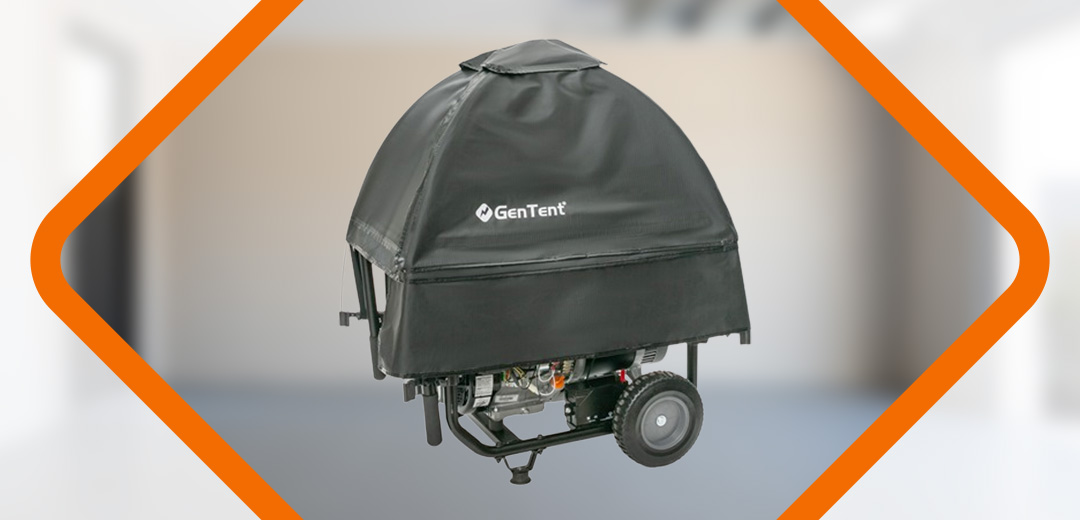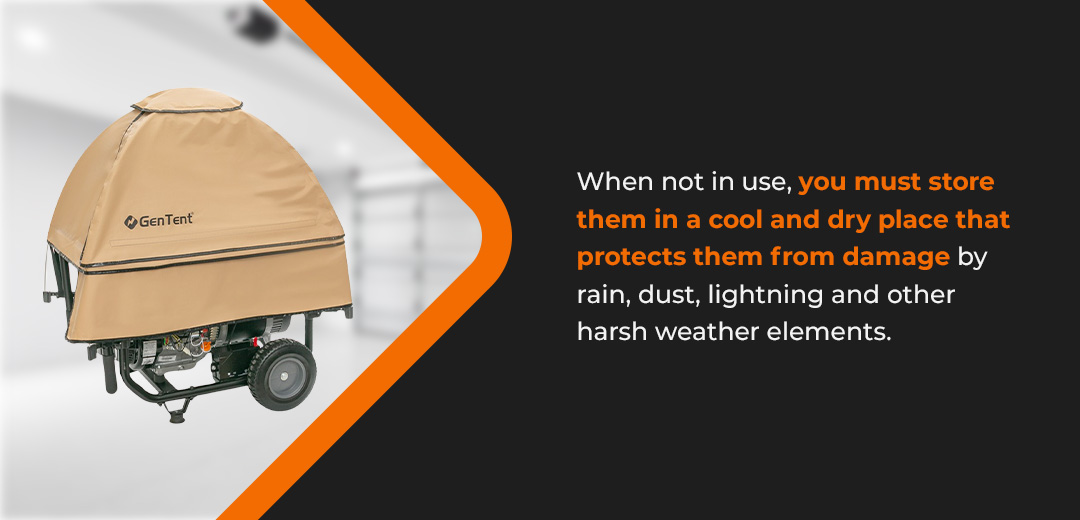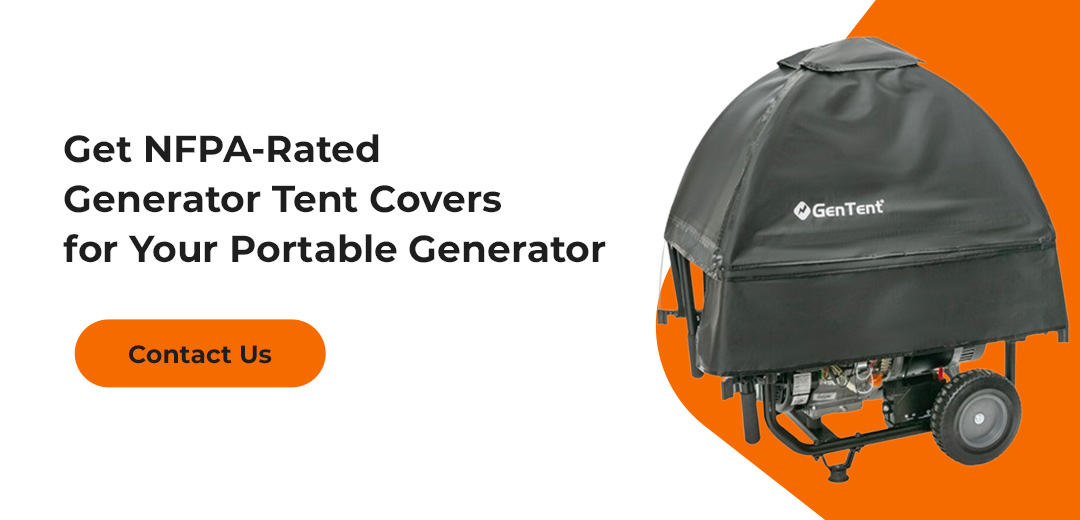Fact or Myth: Proper Use of Portable Generators
Posted by Lornah N. on Aug 21st 2023

Fact or Myth: Proper Use of Portable Generators
Portable generators are a trusted emergency backup in case of a power outage or if you want to power tools and equipment outdoors. Unfortunately, incorrect use is a common cause of preventable injuries, deaths and damage. These risks are often a result of electrocution, carbon monoxide poisoning and fires when users fail to follow the instructions in the user's manual and general safety guidelines.
Some people have also become victims of misconceptions or myths about the correct use and false "exceptions" perpetuated over the years. This article debunks myths about how to use a generator safely.
Myth: You Can Run a Portable Generator Inside the House or Garage
Fact: Generator manufacturers state you should not run your generator in a house or garage, under a carport or even close to an opening to your home. Bringing it inside the house when it's cold or raining outside may be tempting to provide easy access and protect it from the elements. However, you should never run a generator inside, especially not in the main living spaces, basement or crawl spaces.
Generators produce a colorless, odorless, toxic gas known as carbon monoxide (CO) as the fuels burn. When a generator runs indoors, carbon monoxide accumulates quickly and can lead to sickness or death. Placing your portable generator in the garage, outside shed, porch or patio is not safe either because the gas seeps into the house through windows, doors, vents, cracks and crevices.
According to the U.S. Consumer Product Safety Commission (CPSC), it's best to keep the generator at least 20 feet away from your home and garage. This applies whether or not your generator has automatic CO sensors and shut-off technology. These sensors can create a false sense of security, posing an additional hazard.
Myth: It's OK to Plug a Generator Into an Electric Outlet
Fact: You should never connect a generator to a home or building using an electric outlet. Instead, you should always use a transfer switch.
Backfeeding is the dangerous and illegal practice of plugging a generator into an electrical outlet such as a dryer outlet. It involves using a male-to-male electrical cord, which CPSC warns consumers against using because of increased hazards, which include:
- Electrocution or shock: The metal prongs on the end of the extension cord hold and transmit live electricity once the other end is plugged into a power source.
- Fire: These cords result in a reversed flow of electricity, bypassing safety features like circuit breakers and increasing the risk of a fire outbreak. They also fail to comply with national fire safety codes, such as the National Fire Protection Association 70 (NFPA 70).
- Carbon monoxide poisoning: Short male-to-male electrical cords encourage the placement of the generator near the house, increasing the risk of carbon monoxide poisoning.
It's best to follow the manufacturer's instructions when connecting a generator to your home or office building during a power outage to avoid these and more dangers. Still, you should avoid using indoor electric cords to connect generators placed outside because they aren't moisture-resistant. Hence, they increase the risk of electrocution in wet weather.
Myth: Portable Generators Don't Require Maintenance

Fact: Like all electrical machines and equipment, portable generators must be well-maintained to keep them running for a long time. When not in use, you must store them in a cool and dry place that protects them from damage by rain, dust, lightning and other harsh weather elements. Improper storage may result in vents being clogged by dust and dirt or other parts being corroded by moisture.
Before storing your generator, take the following measures:
- Top up the oil levels
- Check for external and internal damages and make repairs
- Wipe it down to remove spilled oil and fuel or dirt and dust
- Empty the gas tank or fill it up and add a fuel stabilizer
Annual servicing that involves replacing air filters and spark plugs ensures your generator runs optimally every season.
Myth: You Cannot Run a Generator in Wet Weather
Fact: Ideally, you should not run your generator in wet weather because of the increased risk of electrocution and damage to the generator. The increased water and moisture levels risk seeping into the electrical panel area or outlets, causing a short circuit that results in shock, electrocution or fire.
However, running your generator in the rain is possible if you keep it dry using a waterproof canopy that protects your family and investment against snow, hurricane-force winds and heavy precipitation.
The CPSC recommends using an NFPA-rated generator tent, like GenTent. If your generator is submerged after a flood, thoroughly evaluate it for damage and dry it completely before plugging it in again. Do not use your generator if you notice smoking or strange odors when you power it on.
Myth: Keep Your Generator Fully Enclosed
Fact: Portable generators dissipate a lot of heat during operation that is released into the air through the exhaust systems. Therefore, the enclosure you pick for your generator should ensure safety and protect your generator from the elements while allowing sufficient airflow. A well-ventilated storage area prevents toxic fumes from accumulating and allows the generator to cool.
An air-tight enclosure decreases the life span of the generator because the engine gets too hot. Additionally, lack of airflow could result in the build-up of carbon monoxide and other flammable or heat-sensitive materials that could cause fire or injury.
Myth: All Generators Run on Gasoline
Fact: While gasoline is the most commonly used fuel for modern portable generators, they run on different fuels, including diesel, propane, solar and biofuels. In most cases, you can't substitute one fuel for another because they don't perform the same in different environments. Check manufacturer manuals to confirm the type of fuel that works with your generator.
In addition to the fuel type, you must take a few other precautions regarding fueling your generator. These include:
- Avoid running your generator until it runs dry — while in use, refuel and verify oil levels.
- Allow the muffler to cool for at least 10 minutes before refueling.
- Run the fuel tank, supply valve and injectors dry before storing it.
- When in storage for a long time, start your generator every three months to minimize start-up issues.
Get NFPA-Rated Generator Tent Covers for Your Portable Generator
GenTent Safety Canopies are American-made generator covers that ensure safe and effective portable generator usage by protecting it from all weather conditions. We make our tents with marine-grade vinyl that covers all electrical elements and protects them against rain, wind and snow.
These NFPA-rated generator tents allow sufficient airflow to run your generator confidently all year long. They're easy to install as you only need to attach them to your generator's vertical frame posts using self-attaching mounting systems. We promise a seamless shopping experience with a perfect fit guarantee.
Contact us to learn more or buy your GenTent by entering your generator make and model on our Fit Finder page.

